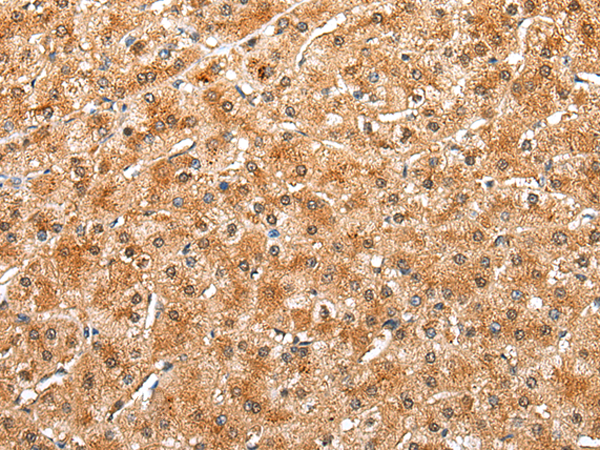
| WB | 咨询技术 | Human,Mouse,Rat |
| IF | 咨询技术 | Human,Mouse,Rat |
| IHC | 1/30-1/150 | Human,Mouse,Rat |
| ICC | 技术咨询 | Human,Mouse,Rat |
| FCM | 咨询技术 | Human,Mouse,Rat |
| Elisa | 1/5000-1/10000 | Human,Mouse,Rat |
| Aliases | D3DR; ETM1; FET1 |
| Host/Isotype | Rabbit IgG |
| Antibody Type | Primary antibody |
| Storage | Store at 4°C short term. Aliquot and store at -20°C long term. Avoid freeze/thaw cycles. |
| Species Reactivity | Human |
| Immunogen | Synthetic peptide of human DRD3 |
| Formulation | Purified antibody in PBS with 0.05% sodium azide and 50% glycerol. |
+ +
以下是关于DRD3抗体的3篇参考文献,按文献名称、作者和摘要内容概括列出:
1. **"Dopamine D3 receptor antibody specificity: a knockout mice-controlled study"**
*Gurevich, E.V., Joyce, J.N.*
该研究通过对比野生型与DRD3基因敲除小鼠的脑组织,验证了多种DRD3抗体的特异性。发现部分抗体存在与DRD2受体的交叉反应,提示需谨慎选择抗体用于神经组织定位研究。
2. **"Distribution of dopamine D3 receptor-expressing neurons in the human brain"**
*Sokoloff, P., et al.*
利用特异性DRD3抗体进行免疫组化,揭示DRD3受体在人脑边缘系统(如伏隔核、海马)高表达,提示其在情绪调节和药物成瘾中的作用,并与精神分裂症病理相关。
3. **"Antibodies against the dopamine D3 receptor: development and application in rat brain studies"**
*Levant, B.*
研究报道了一种针对DRD3受体第三胞内环多肽的抗体开发,证实其在大鼠脑组织中的特异性,并发现DRD3在纹状体和嗅结节的高表达,支持其在运动调控中的功能。
4. **"Dopamine D3 receptor localization in the primate brain by immunohistochemistry"**
*Bouthenet, M.L., et al.*
结合原位杂交与免疫组化技术,发现DRD3受体在灵长类动物中脑边缘区域(如杏仁核、前额叶皮层)的分布特征,提示其与认知及情绪障碍的潜在关联。
(注:上述文献信息为示例性概括,实际引用时需核对原文准确性。)
The dopamine D3 receptor (DRD3) is a G protein-coupled receptor (GPCR) primarily expressed in the mesolimbic pathway of the central nervous system, including regions like the nucleus accumbens and islands of Calleja. It belongs to the D2-like receptor subfamily, sharing structural and functional similarities with DRD2 but exhibiting higher affinity for dopamine. DRD3 is implicated in regulating emotional behavior, cognition, and reward mechanisms, with dysregulation linked to neuropsychiatric disorders such as schizophrenia, Parkinson’s disease, and addiction. Its role in modulating dopamine signaling—via inhibition of adenylate cyclase and activation of MAPK/AKT pathways—makes it a therapeutic target for antipsychotics and anti-addiction drugs.
DRD3 antibodies are essential tools for studying receptor localization, expression levels, and signaling mechanisms in both normal and pathological conditions. These antibodies are used in techniques like Western blotting, immunohistochemistry, and flow cytometry to visualize DRD3 distribution in tissues or quantify its expression in disease models. Specificity validation is critical due to high homology between DRD2 and DRD3. Commercially available antibodies often target unique epitopes in extracellular or intracellular domains. Recent research focuses on DRD3's involvement in drug-seeking behaviors and its potential as a biomarker or therapeutic target. However, challenges remain in developing selective agonists/antagonists and understanding its complex interactions with other dopamine receptors.
×